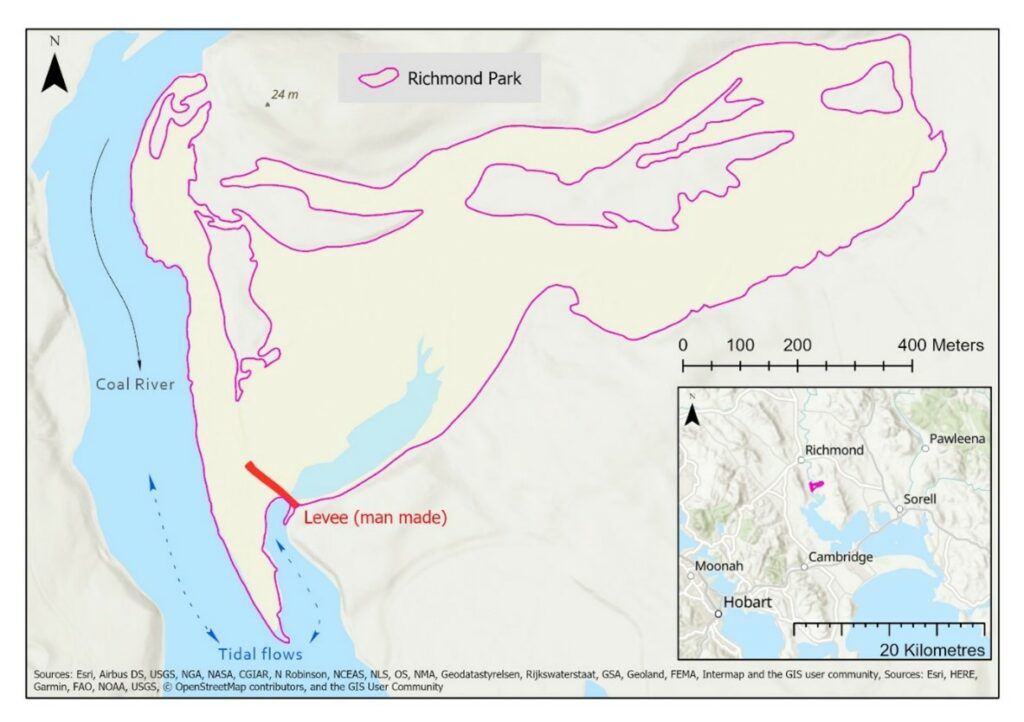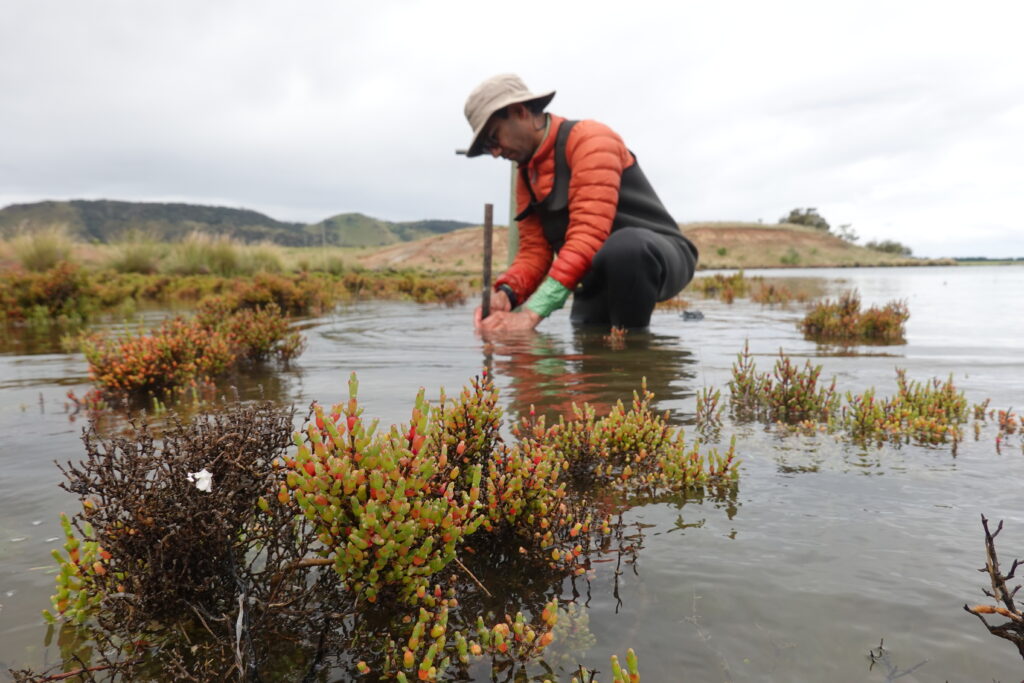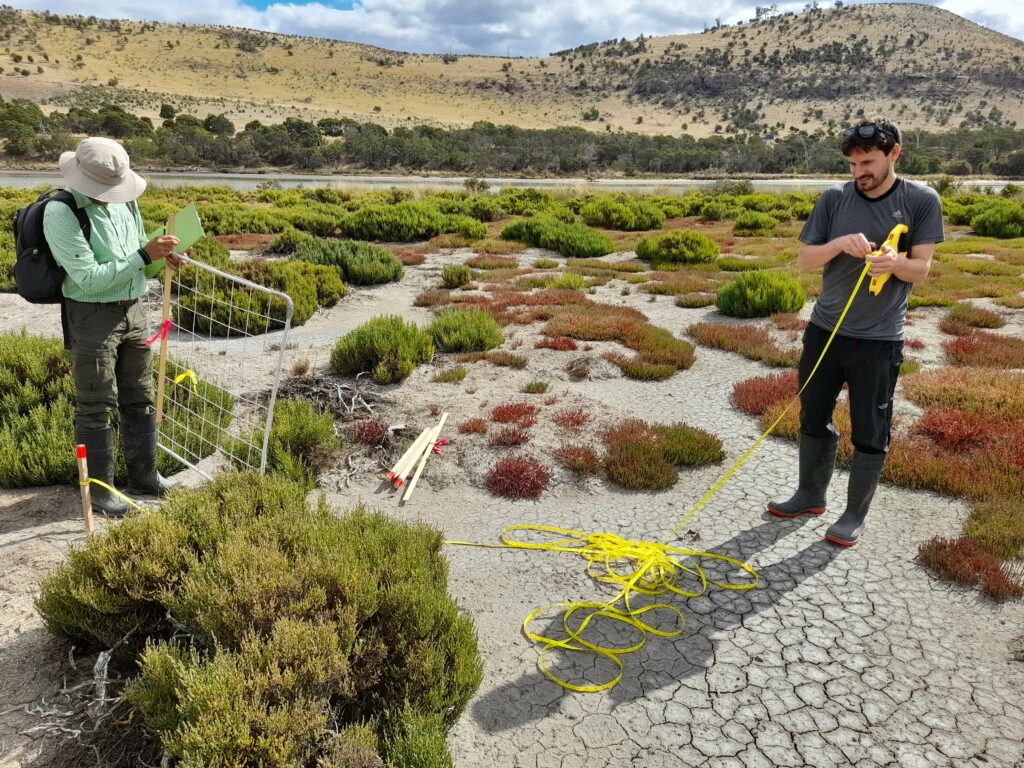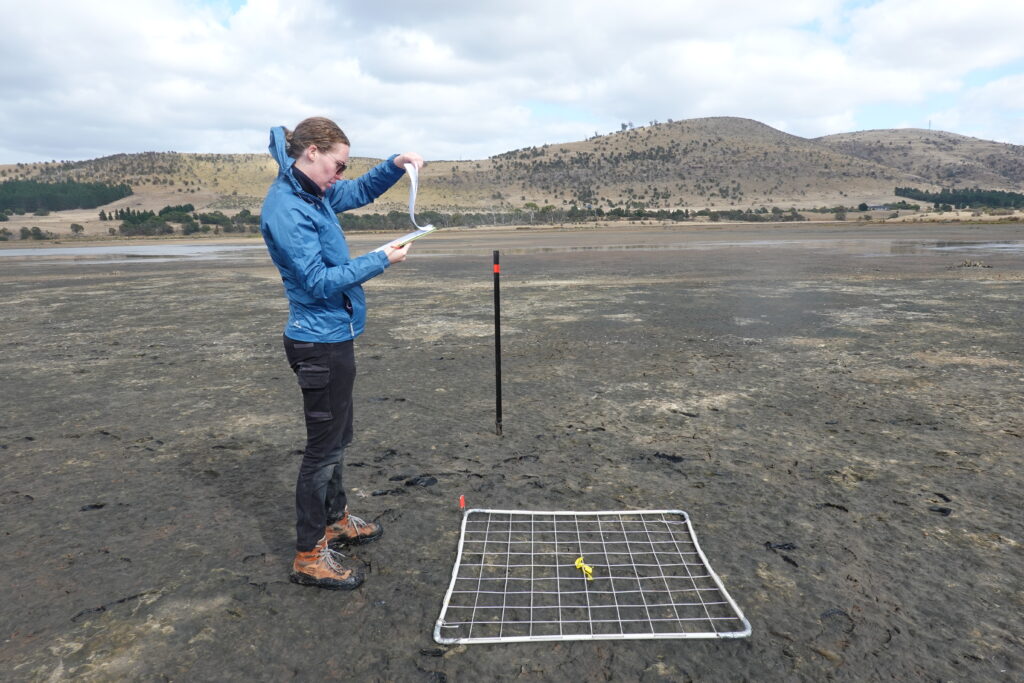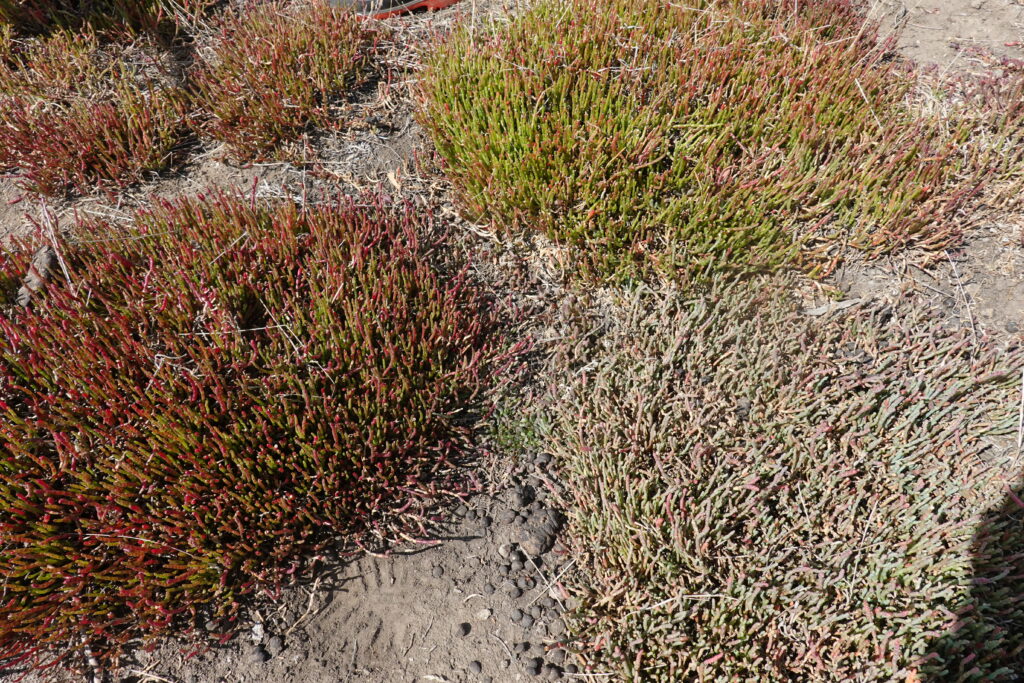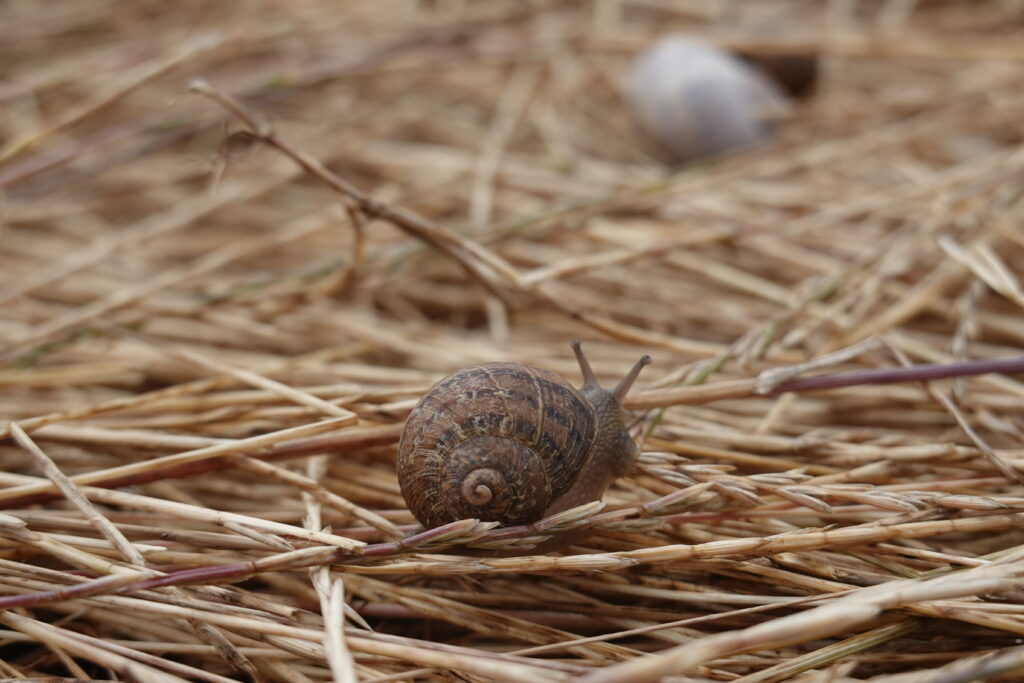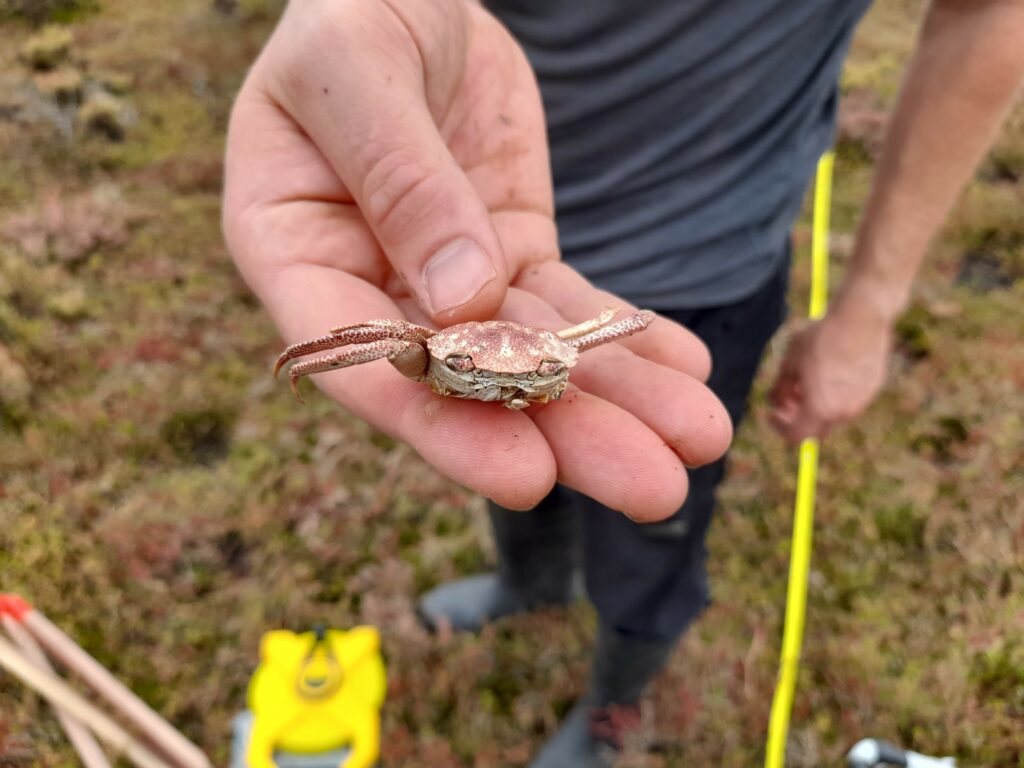
In March 2022, NRM South worked with the University of Tasmania to set up a baseline survey for vegetation monitoring at Richmond Park, situated in the Ramsar-listed Pitt Water-Orielton Lagoon complex. The survey collected information on vegetation cover, composition, and height.
There are many factors that can help determine the health of a saltmarsh, so additional baseline data was also collected. This included filamentous algal cover (which provides information on water quality in saltmarsh environments), the extent of bare ground, the condition of plants and evidence of recent dieback, the presence and extent of weeds, the presence and abundance of animal scats, crab holes, and snails.
The data will help us to evaluate the impact of project activities in restoring this saltmarsh habitat and we will be able to compare the data collected in March 2022 to the data we will collect in March 2023 as part of a follow-up survey.
Surveys were carried out by setting up transect lines that were spread across the different environmental gradients in the study area. A total of 105 1x1m surveys squares called ‘quadrats’ were recorded along the length of these transects, amounting to a 105m2 survey area that provides a good representation of the whole floodplain. To test whether changes in these environmental variables are related to management intervention, ‘control’ sites were also set up in saltmarsh towards the seaward side of Richmond Park.
Within each quadrat, all of the above-mentioned data were collected. Each quadrat was photographed to allow comparison of results after the follow up survey. Members of the community joined in on the survey effort on an open day to learn about the project, survey methods, and lend a hand in collecting data.
By restoring natural tidal regimes thought the removal of the artificial levee, combined with the exclusion of sheep, it is anticipated that impacted saltmarsh will be able to slowly recover. This will be evident in expanded coverage of saltmarsh vegetation, composition, and height in the case of the shrubs, grasses, and sedges. The impact of sheep, including their droppings and hoofprints, is of particular interest as once fencing has been installed to exclude sheep, it is hoped the saltmarsh will begin to show signs of recovery.
This is a partnership project with University of Tasmania, OzFish Unlimited, and property owner Will Eddington, supported by NRM South through funding from the Australian Government.







